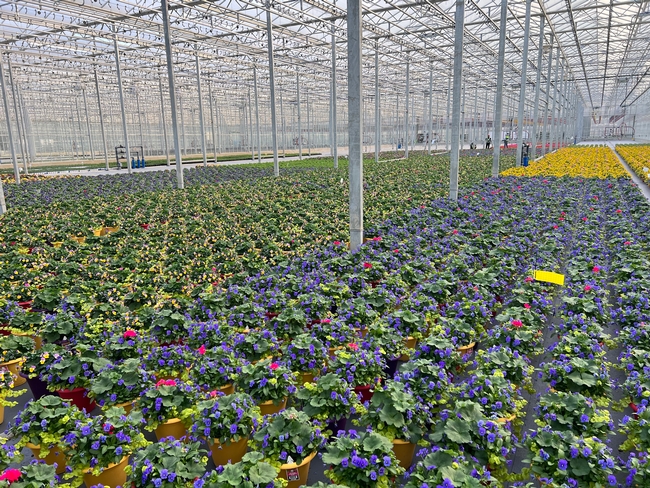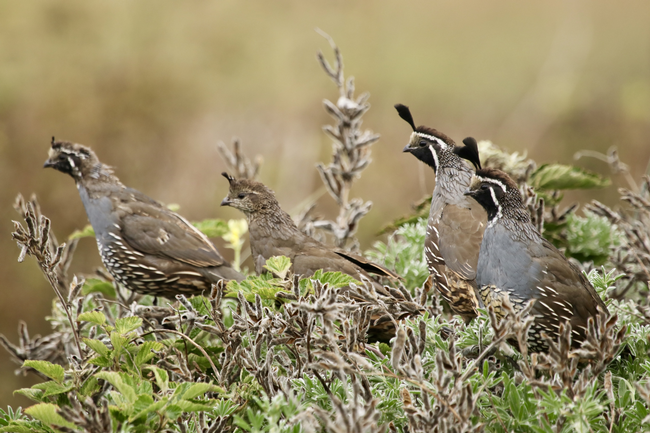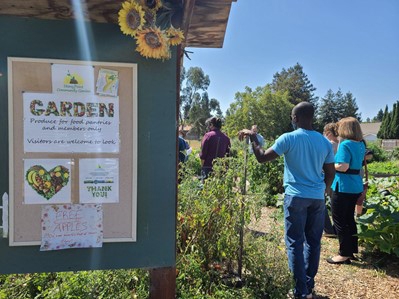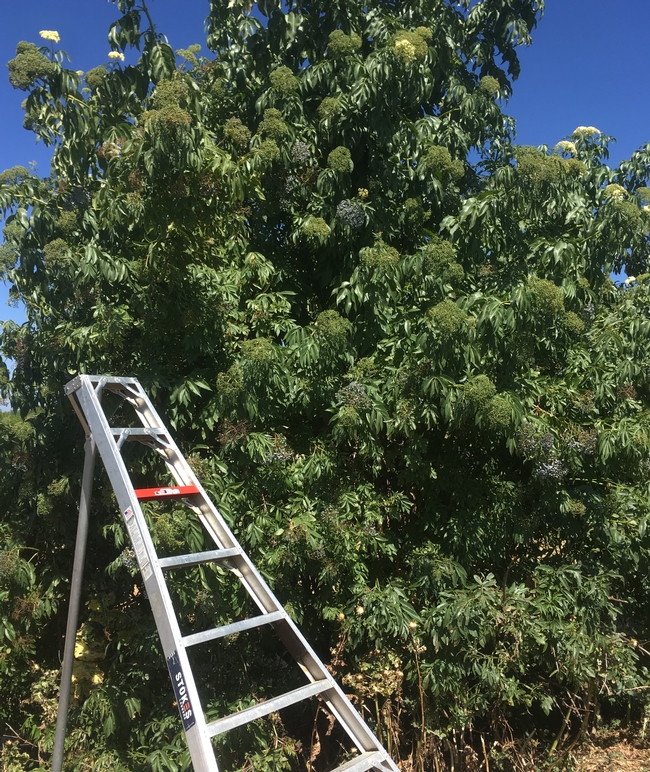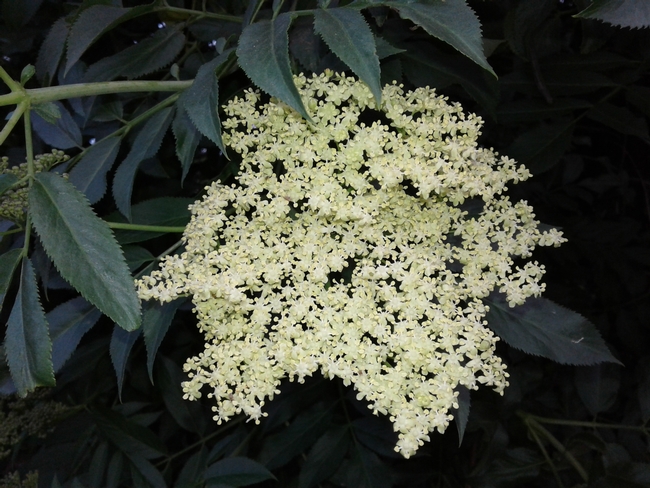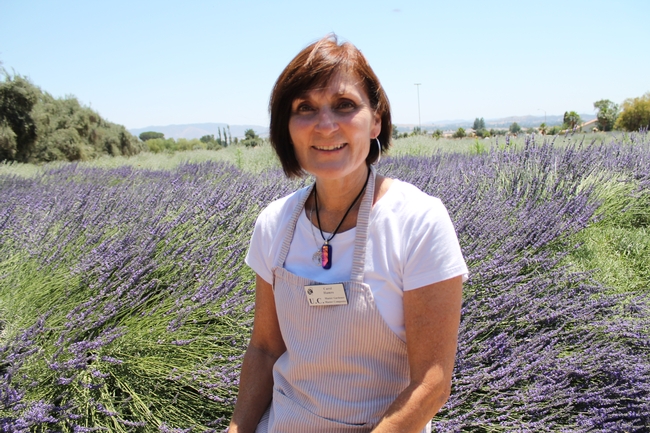
Posts Tagged: farming
Growers invited to take indoor farming survey
Researchers seek insight on emerging controlled environment agriculture trends
Greenhouse operators are encouraged to participate in the 2023 State of Controlled Environment Agriculture survey. IUNU, a technology company that specializes in AI and computer vision solutions for the agriculture industry, and the University of California Agriculture and Natural Resources are conducting the survey to gain insights on emerging trends and challenges to share with the controlled environment agriculture industry.
The survey takes approximately 25 minutes to complete. All growers using CEA – greenhouse, high tunnel or indoor – are invited to participate. All data collected is confidential and shared only as anonymous trends. No identifying information is ever shared. Growers who participate will get early access to the survey results report and will get access to an exclusive webinar to discuss the results with the authors of the report.
The fourth State of CEA Survey can be completed at https://www.surveymonkey.com/r/FVXJSY9.
The report, first released in 2016, was formerly titled “State of Indoor Farming” and managed by Artemis, which was acquired by IUNU in 2021.
This year, IUNU has expanded the survey to include the different leading segments of the controlled environment agriculture industry: greenhouse fruit and vegetable, and greenhouse ornamental production.
UC ANR's VINE agrifood technology innovation program, Global Controlled Environment Agriculture Consortium (GCEAC), and UC Davis-led AI Institute for Next Generation Food Systems (AIFS) are collaborating on the report.
“An industry-led, market-driven approach to guiding innovation priorities and investments is critical as we consider the future of indoor farming,” said Gabe Youtsey, UC ANR chief innovation officer and co-founder of The VINE. “I'm thrilled to partner with IUNU on the development of this State of CEA report with our UC innovation teams from The VINE, GCEAC and AIFS to create a robust state of CEA report that will guide our CEA open innovation priorities this year.”
Since the survey launched in 2016, more than 500 growers have participated in the survey and more than 2 million people have downloaded the report. The industry reports have become one of the most widely circulated and respected sources of industry data.
"This report is a trusted resource for the industry and we're thrilled to bring it back in an expanded capacity,” Allison Kopf, IUNU chief growth officer, said. “Over the past year, we've seen a swell of news around our industry. This report will go deeper into those stories and share data on how companies are performing, big market opportunities, and the real challenges growers are facing.”
Past CEA reports are available for download at https://artemisag.com/guides_reports.
About IUNU
Founded in 2013 and headquartered in Seattle, IUNU aims to close the loop in greenhouse autonomy and is focused on being the world's leading controlled environment specialist. IUNU's flagship platform LUNA combines software with a variety of high-definition cameras – both fixed and mobile – and environmental sensors to keep track of the minutiae of plant growth and health in indoor ag settings. LUNA's goal is to turn commercial greenhouses into precise, predictable, demand-based manufacturers that optimize yield, labor and product quality. www.IUNU.com
About The VINE by UC ANR
The VINE is California's agriculture, food and biotech innovation network powered by the University of California Agriculture and Natural Resources. We believe that the state's continued prosperity rests on creation of more productive, sustainable and equitable food systems. Every day, we harness the power of open innovation to connect entrepreneurs to a broad network of public and private sector resources to enable them to grow and scale globally, build collaborations that catalyze the development of climate-smart technology-based solutions to solve industry challenges, and grow regional capacity to support global innovation as an economic opportunity – because our future, and the nation's, depends on it.
The Global Controlled Environment Agriculture Consortium – an initiative of The VINE – seeks to build a worldwide ecosystem to bring technology to market that addresses global challenges in food, health and sustainability. GCEAC is an open innovation partnership between industry, university and government sectors in the United States and The Netherlands, led from California.
Bringing out the best in wild birds on farms
Natural habitat maximizes the benefits of birds for farmers, food safety and conservation
A supportive environment can bring out the best in an individual — even for a bird.
After an E.coli outbreak in 2006 devastated the spinach industry, farmers were pressured to remove natural habitat to keep wildlife — and the foodborne pathogens they can sometimes carry — from visiting crops. A study published today from the University of California, Davis, shows that farms with surrounding natural habitat experience the most benefits from birds, including less crop damage and lower food-safety risks.
The study, published in the Journal of Applied Ecology, was conducted at 21 strawberry fields along California's Central Coast. It found that birds were more likely to carry pathogens and eat berries without surrounding natural habitat.
The authors said a better understanding of the interplay of farming practices, the landscape, and the roles birds play in ecosystems can help growers make the most out of wild birds near their fields.
“Bird communities respond to changes in the landscape,” said lead author Elissa Olimpi, a postdoctoral scholar in the UC Davis Department of Wildlife, Fish and Conservation Biology at the time of the study. “As birds shift in response to management, so do the costs and benefits they provide.”
The single most important driver
The study looked at how different farming practices influenced the costs and benefits that wild birds provided on the strawberry farms. The scientists combined nearly 300 bird surveys and the molecular analyses of more than 1,000 fecal samples from 55 bird species to determine which birds ate pests, beneficial insects and crops, and carried foodborne pathogens.
They also ranked birds to see which were more likely to bring benefits or costs to farmlands. Barn swallows, for instance, got a “gold star” in the study, Olimpi said. Their mud nests are commonly seen clinging to the underside of barn eaves, from which they fly out to swoop over fields, foraging on insects.
But rather than resulting in a list of “good” and “bad” birds, the study found that most bird species brought both costs and benefits to farms, depending on how the landscape was managed.
The presence of natural habitat was the single most important driver differentiating a farm where wild birds brought more benefits than harm.
“Nature is messy, and birds are complex,” Olimpi said. “The best we can do is understand how to take advantage of the benefits while reducing the harms. Growers will tell you it's impossible to keep birds off your farm — you can't do that and don't want to from a conservation perspective. So how can we take advantage of the services birds provide?”
Win-wins for birds and farms
The study is one of several publications from UC Davis Professor Daniel Karp's lab highlighting the environmental, agricultural, and food safety impacts of conserving bird habitat around farms. A related study in 2020 found that farms with natural habitat attracted more insect-eating birds — and fewer strawberry-eating birds — so that farmers experience less berry damage on farms with more habitat nearby. Such habitats also bring greater numbers of bird species to the landscape.
“All together, these studies suggest that farming landscapes with natural habitat tend to be good for conservation, farmers, and public health,” said Karp.
Additional co-authors of this study include Karina Garcia and David Gonthier of University of Kentucky, Claire Kremen of UC Berkeley and the University of British Columbia, William E. Snyder of University of Georgia, and Erin Wilson-Rankin of UC Riverside.
The research was funded by the USDA and UC Davis Department of Wildlife, Fish and Conservation Biology.
Growing Food & Land Access/Security with Urban and Peri-Urban Farms on Faithlands
On August 25th, UCCE's Urban Ag & Food Systems Program tabled, paneled and supported the 8th Annual Food, Faith and Farms Conference in San Rafael, CA, hosted by Interfaith Sustainable Food Collaborative. The national Faithlands Conference, coordinated between Interfaith and the Agrarian Trust, which hosts the national Faithlands web page as a hub for sharing resources, followed on August 26-27. Rob Bennaton, Urban Ag and Food Systems Advisor, was panel moderator for the Successful Farms and Gardens on Faith Community Owned Lands panel. Julia Van Soelen Kim, North Bay Food Systems Advisor led a workshop focused on Making the Most of Commercial Kitchens, and Vince Trotter, Sustainable Ag Coordinator & Agricultural Ombudsman with UCCE Marin County, led a different workshop on Halal and Kosher: Exploring Relationships with Local Small Livestock Producers. Julio Contreras, UCCE Community Education Specialist III with the UCCE Urban Ag & Food Systems Program, shared urban farming information, supported and facilitated throughout the conference.
The discussion was on one of the most challenging hurdles for beginning and immigrant farmers: securing land to grow food. Meanwhile, religious institutions own lands throughout the United States that are often suitable for agriculture. These plots of land may vary in size from a 1,000 square foot community garden to over 100 acres. Partnerships can allow faith groups to simultaneously save resources, advance food security, connect traditional faith-based stories to land and agriculture, and help small farmers overcome economic and structural barriers. The presenters described innovative projects, including a farmer leasing from a Seventh Day Adventist middle school that successfully transferred ownership 3 times in Sonoma County, CA. There was also a farmer who leased land from her church while developing a farm project, allowing for her to scale to the point she qualified for a USDA loan for a piece of land that has a home and infrastructure. Finally, partnerships were highlighted in which a perennial food forest and seed bank on the grounds of a 4-acre Episcopal Church site were established.
The Faithlands movement is growing nationally to connect and inspire faith communities to use their land in new ways that promote ecological and human health, support local food and farming, enact reparative justice, and strengthen communities. On the Agrarian Trust's Faithlands web page, download the free FAITHLANDS TOOLKIT A Guide to Transformative Land Use. Interfaith is a regional and national organization which supports congregations of all faiths, denominations and backgrounds by connecting them with farmers and supporting farm stand initiation, farmers markets, and CSAs.
The idea is innovative and yet traditional, since so many faith-based groups are doing community-based food systems work, such as emergency food distribution, operating commercial-scale kitchens, or stewarding lands that could be cultivated by local farmers.
In particular, lands stewarded by faith-based groups in urban areas present a huge opportunity for cultivation by urban farmers, given high costs of land values in cities. Land for Good is another great organization that supports land transfers for farming and the development of land use agreements. Their amazing ToolBox web page has significant resources for building and negotiating leases for- and with- farmers and landowners.
The conference had a great turnout with powerful speakers and groups doing inspiring work around the nation. Speaker Rabbi Justin Goldstein from Yesod Farm+Kitchen in Fairview, North Carolina, opened the conference, sharing key points on building relationships for indigenous lands stewardship, and the process of returning this unceded land. Food justice and sustainability leaders representing 47 different religious communities were in attendance. While most came from the North Bay and East Bay, there were also participants from elsewhere in California and eight other states.
As described on the Interfaith Sustainable Food Collaborative website, “For the first time the conference included tours of farms and gardens at 7 different faith-community sites. Diverse speakers included 8 farmers growing food on lands owned by religious institutions. Ammar Ahmed of Islamic Circle of North America in Washington, D.C. spoke about the response of Muslim communities in the U.S. to hunger during theCOVID Pandemic. He called on attendees to help with the national effort by Muslim and Jewish groups to urge USDA to make kosher and halal meat available to observant Jews and Muslims through an emergency food program. Advocates are concerned about protein options available to observant individuals who utilize TEFAP, The Emergency Food Assistance Program (A letter signed by some 47 members of Congress went toUSDA last week; we will keep the Interfaith Food network apprised of how to help with this work.)” - Steve Schwartz, Executive Director, Interfaith Sustainable Food Collaborative.
In the Bay Area, South Berkeley, East and West Oakland, and South Hayward congregations have established small farms and gardens with their congregations. UCCE's Urban Ag & Food Systems Program with Alameda County RCD and Interfaith is providing technical support to a new East Alameda Gurdwara farming initiative managed by the Sikh community there. If you know of a faith-based group interested in this work, please reach out to Interfaith Sustainable Food Collaborative. Our Urban Ag collaborative team is also ready to work with you.
New guide shows how elderberry activates hedgerows, ecologically and commercially
A farm-edge hedgerow can be more than a boundary or barrier. When it comprises blue elderberry, it can be a way to integrate biodiversity in an often-simplified agricultural landscape – and connect with a legacy of stewardship and use by California's Native peoples.
A new guide, published by UC Agriculture and Natural Resources, provides detailed instructions and advice for California farmers on growing, harvesting and marketing blue elderberry. It is available as a free download in the UC ANR catalog at https://anrcatalog.ucanr.edu/Details.aspx?itemNo=8709.
“It's the only publication of its kind, that we know of, that focuses on commercial production of a native species from within a hedgerow, which people normally think of as a conservation feature,” said Sonja Brodt, one of the publication's authors and associate director of UC ANR's Sustainable Agriculture Research and Education Program.
In addition to illustrating the plant's many ecological benefits, “Producing Blue Elderberry as a Hedgerow-Based Crop in California” highlights the economic viability of the products made from its flowers, berries and other components.
“Consumer interest in elderberry products is booming,” said Brodt, “and blue elderberry has the potential to meet local needs with a locally adapted species that is climate-resilient, and can be produced in a relatively low-input way that supports – rather than displaces – our native ecosystems.”
The guide incorporates the findings of a UC SAREP project exploring the farm management practices, nutritional content and market potential of elderberry products. And Brodt emphasized that this resource also draws upon the deep knowledge of Indigenous people, as well as best practices of growers such as Katie Fyhrie, formerly of The Cloverleaf Farm in Dixon and another author of the guide.
“We originally got inspiration to do this work from local farmers who are pioneering the use of blue elderberry harvested on their farms, and from Native Americans in California who have long stewarded and utilized blue elderberry for food and other cultural uses,” Brodt explained.
The other publication authors are Gwenael Engelskirchen, sustainable supply chain analyst for UC SAREP; and Katie Uhl, graduate student researcher; and Alyson Mitchell, professor in UC Davis' Department of Food Science and Technology.
Small-scale growers meet virtually to discuss organic agriculture
Over 150 current and prospective organic growers gleaned practical information shared by UC Agriculture and Natural Resources experts at the “Introduction to Small-Scale Organic Agriculture” workshop held virtually on Dec. 15, 2020. While most attendees were from inland San Bernardino, Riverside, Los Angeles and Orange counties, a handful were 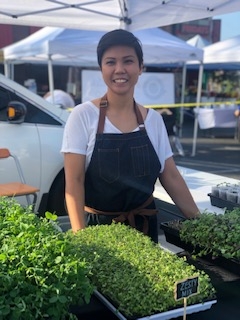
“I attended this workshop and it was very helpful to hear different aspects of organic farming from experienced people,” one attendee from Sri Lanka said in an email.
UC Sustainable Agriculture Research and Education Program (SAREP) Director Gail Feenstra and Deputy Director Sonja Brodt kicked off the day with a presentation on program goals and resources. SAREP supports the goals of growers by developing more sustainable agricultural practices and effective regional food systems. They described a new online self-directed training program for organic specialty crop farmers in California and those in transition at https://ofrf.org/beginning-farmer-training-program. They also discussed marketing and business management.
Houston Wilson, director of UC ANR's new Organic Agriculture Institute, provided an overview of the program and pointed out that organic farming is expanding throughout California and includes more than 360 commodities. UC ANR will continue to take a lead role in developing and extending research and extension to this important sector, he said.
UC Cooperative Extension sustainable food systems advisor Rachel Surls discussed legal basics such as permits, licenses and regulations. UC Cooperative Extension organic agriculture specialist Joji Muramoto talked about the importance of soil health, a very popular and important topic. Other UC Cooperative Extension presenters covered nitrogen management (small farms advisor Margaret Lloyd), irrigation management (irrigation specialist Amir Haghverdi), integrated pest management (IPM advisor Cheryl Wilen), and plant diseases (plant pathology specialist Alex Putman).
“Thank you for the great workshop and resource links you provided for workshop materials and beyond! I have already downloaded and started to incorporate information from a few of the UC ANR pest management guidelines and legal and marketing links,” wrote an attendee from Chino. “Tips from peers are always great, too.”
During the afternoon portion of the workshop, five California organic farmers shared tips from their experiences. Carol Hamre (123 Farm, Cherry Valley) spoke about her trials and successes regarding vertebrate pest control and drip irrigation. Grace Legaspi (Tiny Leaf Micro Farm, Temescal Valley) talked about the art and science of growing microgreens. Lisa Wright (RD Flavorfull Farm, Riverside) discussed the importance of planting the right varieties in the right seasons. Arthur Levine (Huerta del Valle, Ontario) stressed the importance of collaboration and working synergistically as a team, and the importance of inclusiveness in all practices. Richard Zapien (‘R Farm, UC Riverside) shared inspiring stories and opportunities regarding the popular and successful UC Riverside community garden he manages.
“I am very glad to attend this workshop as a Bangladeshi,” wrote a grateful attendee from half way around the world. “Really, I have learned many things about organic farming in this workshop. I am working in the Tree nuts sector in Bangladesh but I have only cashew nuts plantation and processing factory…. I want to make an organic farm on 25 acres of land to cultivate vegetables, fruits, livestock, and fishing. Thanks again.”
Following the workshop, an extensive list of UCANR and external resources on topics covered during the workshop was provided to attendees https://ucanr.edu/sites/smallscalefarming/RESOURCES_/.
“I wanted to thank you for such a great webinar,” replied another Southern California participant. “I am a farm business advisor with the non-profit Kitchen Table Advisors and I learned a lot myself. Thank you for providing this list of resources. I look forward to the webinar recordings and slides, which I hope to be able to share with some of my farmer clients.”
The efforts of our co-sponsors also led to the overall success of the workshop. Inland Empire Resource Conservation District (IERCD) Manager Mandy Parkes, co-moderator, discussed district irrigation and soil testing resources and handed out gift certificates throughout the day. Evelyn Hurtado from IERCD volunteered to translate the workshop recordings into Spanish and Maggie O'Neill shared membership information and resources from the San Bernardino County Farm Bureau. Other co-sponsors included the Riverside County and Orange County Farm Bureaus. The California Certified Organic Foundation promoted the workshop and heightened awareness of UC ANR's programs and activities in the field of organic agriculture.
The PowerPoint presentations and recordings in English will be posted on the UCCE San Bernardino County website: https://ucanr.edu/sites/smallscalefarming/ by Feb. 15, 2021, and the Spanish translations later this winter. Next year, if conditions allow, actual farm visits will be included.

